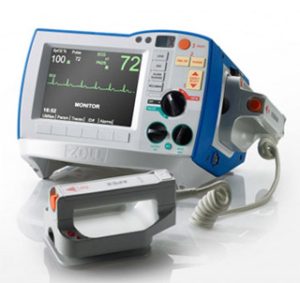You are the leader of the code team. Your patient is in refractory VF after multiple rounds of shocks and drugs. You’ve tried repositioning the pads into an anterior-posterior position. Looking around, you ask for suggestions. Someone suggests double sequence defibrillation. After all, what’s the harm?
Sorry to take away one of your toys, cowboys, but, as it turns out, double sequence defibrillation may not be as magical as we thought. Most of the evidence in favor of double sequence defibrillation comes from case reports. No studies have demonstrated improved outcomes when compared to patients who received standard defibrillation, and the technique is still “off label” according to manufacturers.
According to a recent study in Annals (see below), double sequence defibrillation may actually cause hidden damage to the machine and cause malfunctions, putting future patients at risk. Furthermore, the machines are apparently not tested to withstand double sequence defibrillation, so it may void the warranty.
So, next time you want to try double sequence defibrillation, stop and think about whether or not you have exhausted all other options. And, if you are going to do it, make sure you know how to do it correctly. Don’t just blindly try it because it’s cool. There may be real harm associated.
Need to brush up on cardiac arrests? Click here:
http://emcrit.org/emcrit/cardiac-arrest-update/
Want to read more about refractory VF? Both of these links discuss how to perform double sequence defibrillation:
http://epmonthly.com/article/current-state-refractory-vf/
References:
External Defibrillator Damage Associated With Attempted Synchronized Dual-Dose Cardioversion. Gerstein NS, McLean AR, Stecker EC, Schulman PM. Ann Emerg Med. 2018 Jan;71(1):109-112. doi: 10.1016/j.annemergmed.2017.04.005. Epub 2017 May 27.

